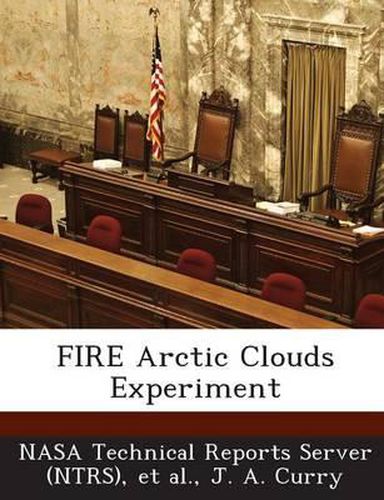Readings Newsletter
Become a Readings Member to make your shopping experience even easier.
Sign in or sign up for free!
You’re not far away from qualifying for FREE standard shipping within Australia
You’ve qualified for FREE standard shipping within Australia
The cart is loading…






An overview is given of the First ISCCP Regional Experiment (FIRE) Arctic Clouds Experiment that was conducted in the Arctic during April through July, 1998. The principal goal of the field experiment was to gather the data needed to examine the impact of arctic clouds on the radiation exchange between the surface, atmosphere, and space, and to study how the surface influences the evolution of boundary layer clouds. The observations will be used to evaluate and improve climate model parameterizations of cloud and radiation processes, satellite remote sensing of cloud and surface characteristics, and understanding of cloud-radiation feedbacks in the Arctic. The experiment utilized four research aircraft that flew over surface-based observational sites in the Arctic Ocean and Barrow, Alaska. In this paper we describe the programmatic and science objectives of the project, the experimental design (including research platforms and instrumentation), conditions that were encountered during the field experiment, and some highlights of preliminary observations, modelling, and satellite remote sensing studies.
$9.00 standard shipping within Australia
FREE standard shipping within Australia for orders over $100.00
Express & International shipping calculated at checkout
An overview is given of the First ISCCP Regional Experiment (FIRE) Arctic Clouds Experiment that was conducted in the Arctic during April through July, 1998. The principal goal of the field experiment was to gather the data needed to examine the impact of arctic clouds on the radiation exchange between the surface, atmosphere, and space, and to study how the surface influences the evolution of boundary layer clouds. The observations will be used to evaluate and improve climate model parameterizations of cloud and radiation processes, satellite remote sensing of cloud and surface characteristics, and understanding of cloud-radiation feedbacks in the Arctic. The experiment utilized four research aircraft that flew over surface-based observational sites in the Arctic Ocean and Barrow, Alaska. In this paper we describe the programmatic and science objectives of the project, the experimental design (including research platforms and instrumentation), conditions that were encountered during the field experiment, and some highlights of preliminary observations, modelling, and satellite remote sensing studies.